Santorini’s blue-domed churches and whitewashed houses are famous, but honestly, I found my favorite spot far from the crowds. Imerovigli, the so-called “Balcony to the Aegean,” really does earn that name with its quiet streets and views that just keep going over the sparkling caldera.
Staying in Imerovigli gave me some of the most incredible, uninterrupted panoramas of the Aegean Sea I’ve seen anywhere on the island.
As I wandered through this hillside village, a rare calm settled over me—something you don’t get in most of Santorini. Watching the sunset here felt like nature’s private performance, just for me.
The village sits so high that every few steps, I’d stumble onto a new, picture-perfect view.
If you’re after a peaceful escape in Santorini, with unforgettable scenery and fewer tourists, Imerovigli should be at the top of your list.
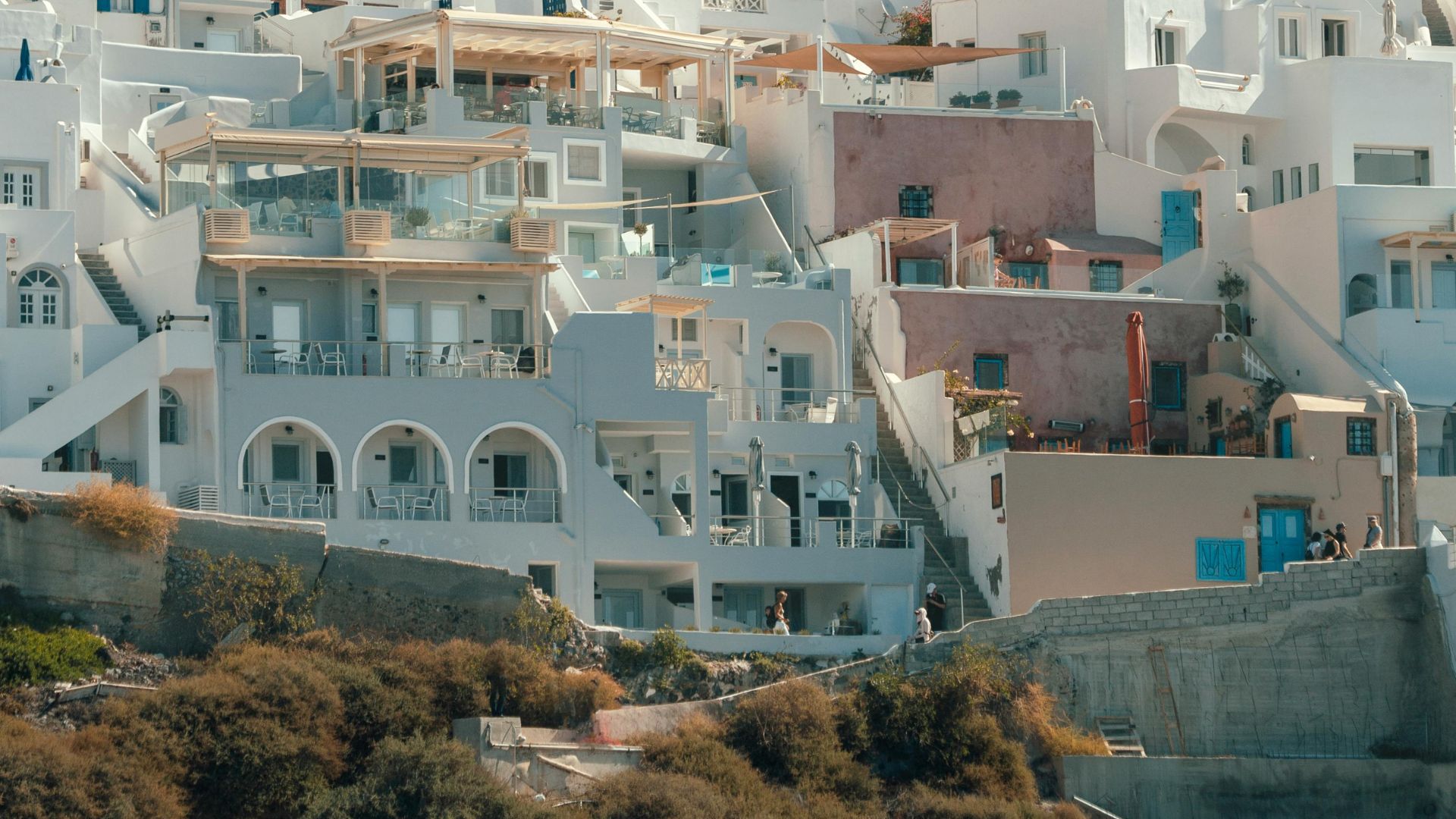
Why Imerovigli Is the Balcony to the Aegean
Imerovigli grabbed my attention with its mix of peaceful charm and those wild views. The village sits high above the caldera, far from the busiest hotspots, and that brought a sense of quiet luxury to my Santorini trip I just hadn’t found elsewhere.
Unrivaled Caldera Views
Waking up in Imerovigli, I saw the caldera laid out before me like a living, moving painting. The village stands at the highest point on Santorini’s caldera rim, so the vistas are wide open and nearly endless.
I could look from Oia to Fira with a simple turn of my head, soaking in sunsets that set the whole Aegean ablaze in orange, pink, and gold.
Most hotels and suites here have private terraces or pools facing the sea. On clear days, the wild cliffs and blue water seemed to stretch on forever.
Since there aren’t as many tourists crowding the rails, I often enjoyed these views in near silence.
If you crave Santorini’s famous views but want space to breathe, Imerovigli is the answer. Every walk along the cliffside path surprised me—sometimes Skaros Rock would jut out dramatically, or I’d spot ships gliding quietly across the caldera.
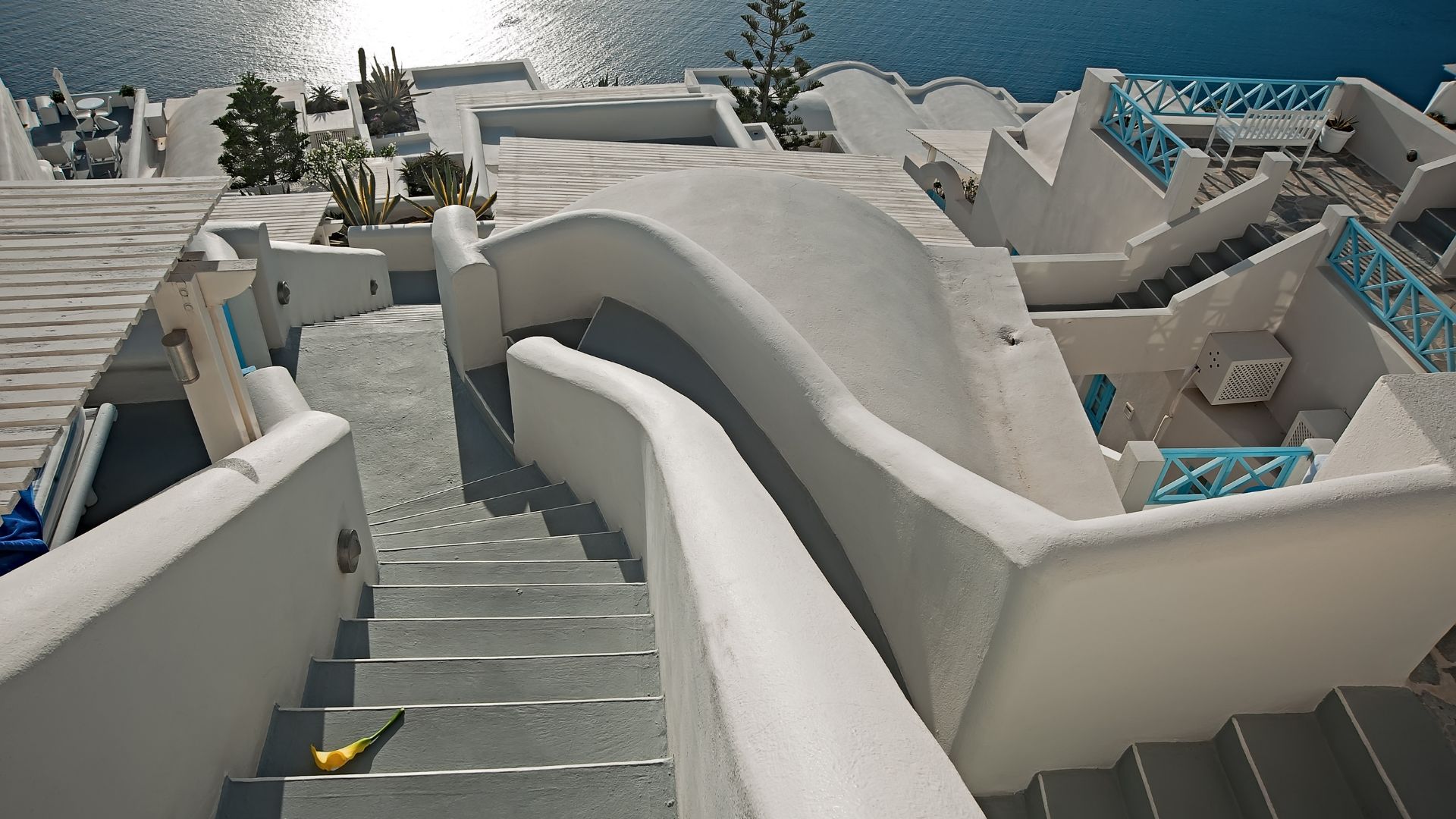
The Village’s Exclusive Atmosphere
Imerovigli felt like a world apart from Oia or Fira. It’s close to both, but the vibe is calm and a bit exclusive, making it a favorite for couples and solo travelers who want a private escape.
I loved the slower pace and noticed that everything—from boutique hotels to family-run restaurants—seemed designed for relaxation.
Crisp white houses and small chapels line the streets, but you won’t see endless rows of souvenir shops. There’s a subtle luxury here.
Many places offer personalized service, and the mood stays laid-back but polished. I enjoyed long breakfasts on shaded terraces, usually with nothing but the wind and distant bells for company.
There’s an intimacy in Imerovigli that’s tough to find elsewhere on Santorini. It’s no wonder they call it the “balcony to the Aegean”—it almost feels like a secret viewpoint for those in the know.

Unique Positioning Above the Cliffside
Imerovigli’s location really sets it apart. The village perches on the highest point of the caldera’s edge, with buildings clinging dramatically to the cliffside.
Almost every spot in the village looks out over the sea and volcanic crater below.
Many rooms and restaurants are built right into the cliff, stacked in layers so everyone gets a front-row seat to the Aegean. Skaros Rock, an old fortress, is just a short walk away and offers even more amazing perspectives.
Getting here means tackling some steep paths, but the reward is worth it.
Other villages might have nice views, but Imerovigli’s elevation made me feel like I was floating above Santorini. The world below fades away, and the horizon just opens up.
For me, this “balcony” was more than a nickname—it was a real, breathtaking advantage I enjoyed every day.
Waking Up to Santorini’s Iconic Scenery
Every sunrise in Imerovigli felt like waking up inside a postcard. Soft light crept across whitewashed villas, painted churches, and endless blue skies.
Cycladic-Style Architecture
Before the sun climbed high, the shapes and colors of Imerovigli caught my eye. I noticed homes and villas built in that classic Cycladic style—simple curves, bright white walls.
Pathways twist through the village, linking everything from small family houses to luxury hotels carved right into the cliff.
What stood out:
- Thick walls that kept rooms cool
- Flat roofs and minimal decor
- Everything built close together, giving the village a cozy feel
As I wandered in the morning, I admired how the buildings seemed to cling to the caldera’s edge. Even the whitewashed churches, with their domes and crosses, felt like part of the landscape.
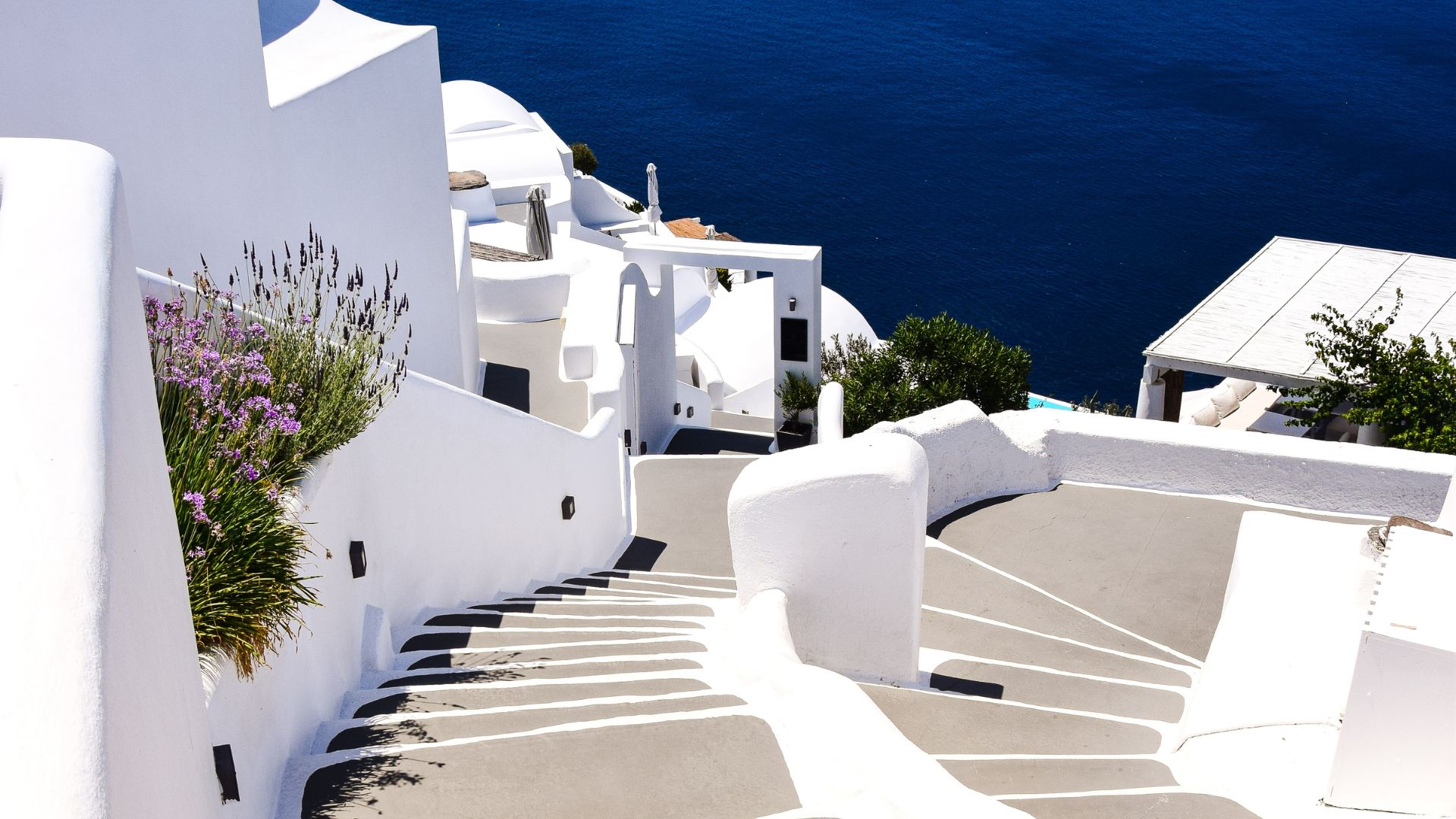
Whitewashed Villas and Blue Domes
You can’t think of Santorini without picturing blue domes over white buildings. In Imerovigli, this view is everywhere.
I watched sunlight bounce off bright villas and tiny churches. The domes, painted that perfect blue, matched the sky and sea.
Many villas, including the one I picked, had arched windows and little private courtyards. I liked passing rows of carefully painted doors, each in a different blue or green.
On quiet mornings, I’d just sit and stare at the domes—church bells ringing faintly as the village slowly woke up.
A quick list of notable features:
- Smooth, whitewashed walls reflecting sunlight
- Blue domes that pop against the sky
- Villas with colorful doors and shutters
Private Terraces With Panoramic Views
My villa’s private terrace is where I felt Imerovigli’s magic most. Every morning, I’d step out with strong Greek coffee and watch the caldera glow under the rising sun.
The terrace was simple—a sturdy table, two chairs, classic tile underfoot—but the view seemed endless.
I could spot cruise ships far below and cliffs plunging into the water. Some villas nearby had infinity pools, but honestly, even without one, the sense of space and privacy was unbeatable.
Why the terraces matter:
- Offer a quiet spot above busy island towns
- Perfect for sunrise breakfasts or late-night stargazing
- Panoramic views of the Aegean and Santorini’s iconic scenery
It was on that terrace that I finally understood why Imerovigli is called the “Balcony to the Aegean.”
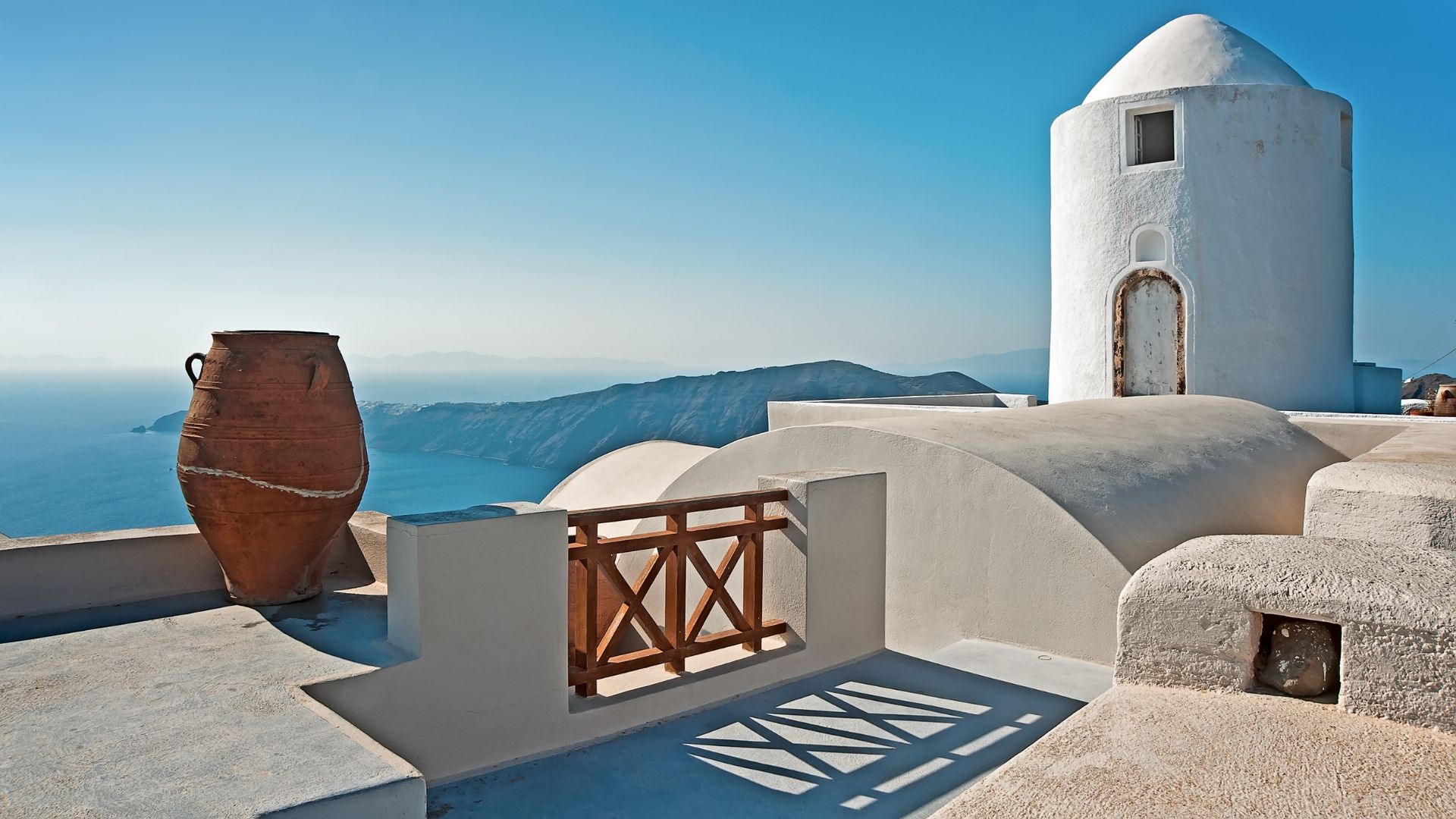
Exploring Skaros Rock and Historic Landmarks
Skaros Rock juts out from the caldera, impossible to ignore, and draws in anyone craving a little adventure or history. With the challenging hike, the peaceful Panagia Theoskepasti church, and endless photo ops, this area packs a lot into a small space and made my time in Imerovigli unforgettable.
Hiking up Skaros Rock
Hiking up Skaros Rock quickly became one of my favorite outdoor activities in Santorini. The trail starts right at the edge of Imerovigli.
I took on a series of stone steps that wind along the cliff, each turn opening up bigger views of the sea and the whitewashed houses above.
The path isn’t too tough, but you’ll want good shoes and a little caution near the end. Once I reached the ruins on top, I could really feel the history all around.
Skaros once stood as a fortress protecting Santorini. Today, it offers sweeping views of the caldera, the villages, and the blue expanse below.
From the peak, the clouds almost felt close enough to touch, and the wind made everything seem more alive. I brought water and my camera—both must-haves for the climb.
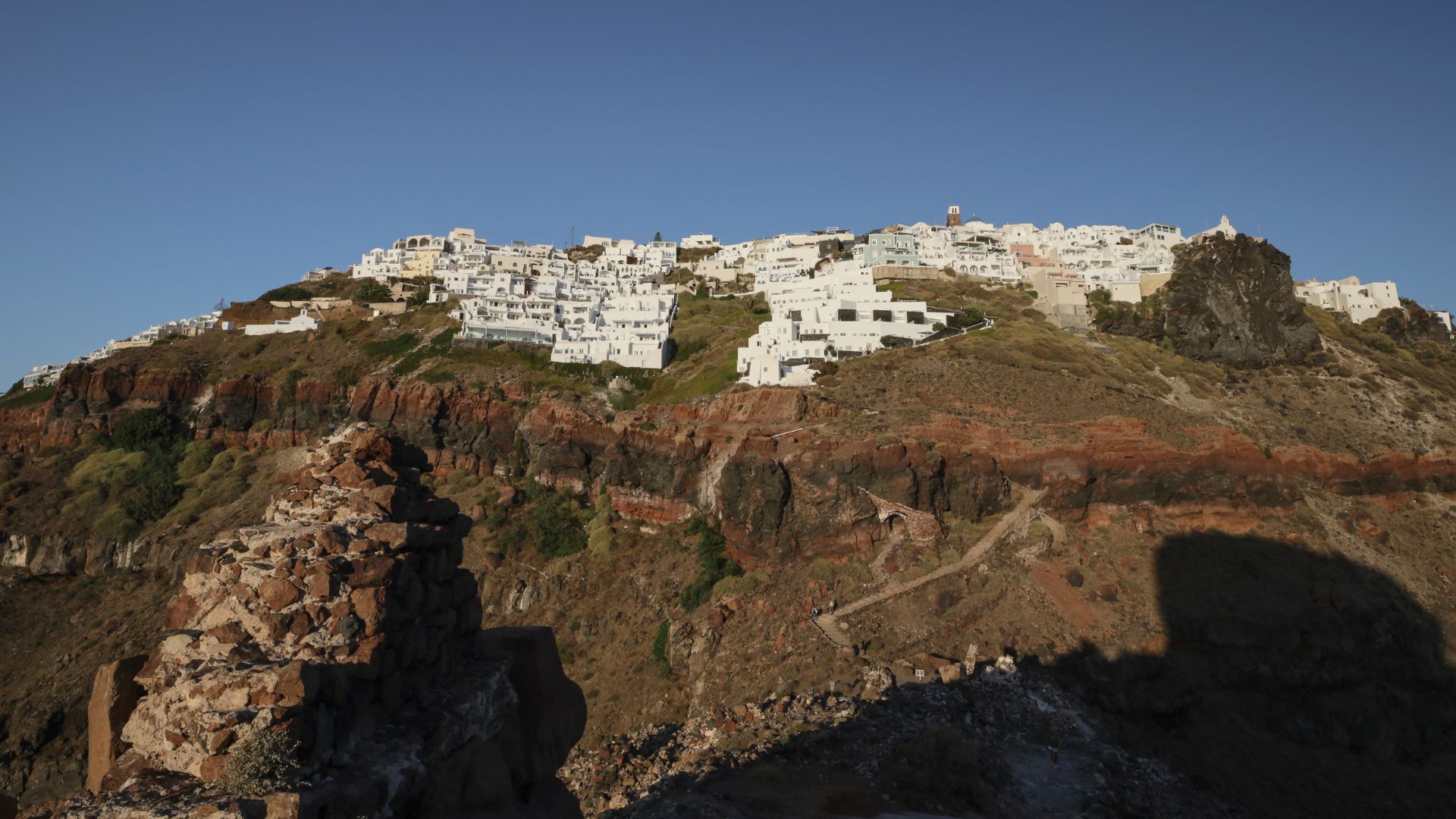
Discovering Panagia Theoskepasti
Halfway along the path around Skaros Rock, I stumbled onto the hidden church, Panagia Theoskepasti. There weren’t any signs, so it felt like a secret.
The church’s white walls and blue dome stand out against the rock, perfectly matching Santorini’s classic style.
I walked a few extra steps down a narrow path to reach its little courtyard. Inside, everything was calm.
The silence, broken only by the odd seagull, gave me a welcome break from the main trails and crowds above.
Locals still come here for special days, and I noticed traces of old blue paint and flickering candles left by past visitors. It was the perfect spot to pause and breathe.
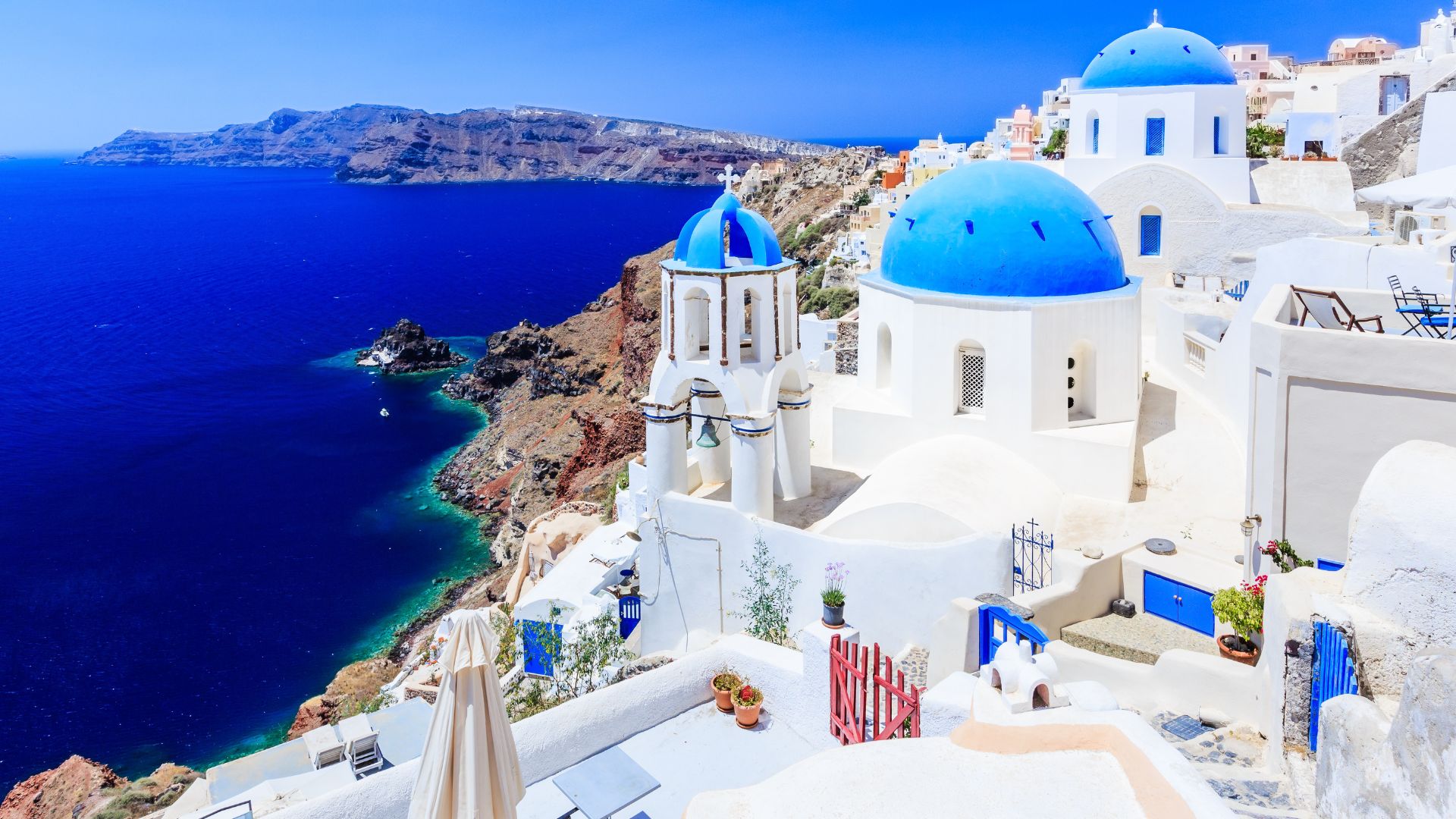
Photographic Spots for Stunning Pictures
My camera barely stayed in my bag. Skaros Rock and the area around it are full of postcard-worthy scenes.
The path up gives layered shots of the caldera cliffs and Fira in the distance. Early morning or late evening light worked best for me—the low sun softened the shadows and made the stone glow.
From the peak, I caught sweeping panoramas with boats drifting below and Oia in the distance. Near Panagia Theoskepasti, the bright dome frames the sea perfectly—great for wide shots or portraits against the endless blue.
A few tips I picked up for photos:
- Golden hour: Right after sunrise or before sunset
- Bring a polarizer: Helps cut haze and punch up the colors
- Watch your step: Some ledges are narrow but offer the best angles
There’s never a shortage of unique scenes around Skaros. The light and clouds change by the minute, so every visit feels different.
Where to Catch the Perfect Santorini Sunset
Watching the sun dip behind the caldera, painting the sky in gold and pink, just hits different here. Imerovigli has quiet viewpoints, romantic hideaways, and memorable evenings—all perched above the Aegean.
Imerovigli’s Best Sunset Spots
The main path along the caldera rim offers some of the island’s most impressive sunset views. I like to stroll here about an hour before dusk, and the crowds usually feel much smaller than in Oia.
A gentle breeze drifts in, and the peaceful air makes it easy to settle in and just watch.
Skaros Rock really stands out as the spot with the best vantage point. The climb gets steep and uneven in places, but reaching the top rewards you with panoramic views of Santorini’s blue-domed churches and volcanic cliffs.
I usually just pick a bench or a stone ledge—no reservations, no stress.
If you’re after comfort, plenty of cafes and restaurants along the edge let you linger over a cold drink while the light shifts. These places fill up fast, so I always try to reserve ahead.
| Sunset Spot | Atmosphere | Tips |
|---|---|---|
| Main Caldera Path | Peaceful | Arrive early for best benches |
| Skaros Rock | Adventurous | Sturdy shoes for the hike |
| Cliffside Cafés | Relaxed | Book a table before sunset |

Romantic Escapes and Hidden Corners
Imerovigli feels intimate, with plenty of tucked-away spots perfect for couples. I’ve found narrow walkways winding between whitewashed villas, and the views open up just enough for two people to stand side by side.
The privacy makes every evening feel special.
Some luxury hotels in the area offer private terraces right on the caldera. Even if I’m not staying there, I sometimes visit the rooftop bar for drinks and sunset.
The light feels softer here, and conversations stay hushed compared to the busier public lookouts.
My favorite hidden escape? A small stone wall behind an old chapel. Hardly anyone passes by, and it’s the perfect place to share a quiet sunset with someone special.
Unforgettable Evenings on the Caldera Edge
Night falls slowly in Imerovigli. As the sun sinks lower, lights from the cliffside buildings start to twinkle, and everything feels almost suspended between sea and sky.
I like to bring a light jacket and a camera to capture these moments. The changing colors can get surprisingly chilly after dark.
I often meet fellow travelers on the caldera edge, sharing snacks and swapping stories. Sometimes, local musicians play in the background, and it adds to the feeling that this is a shared experience, but still somehow deeply personal.
For a memorable finish, I’ll sometimes book a late dinner at a terrace restaurant overlooking the water. Watching boats drift across the caldera while dessert arrives—honestly, that’s my idea of a perfect Santorini evening.
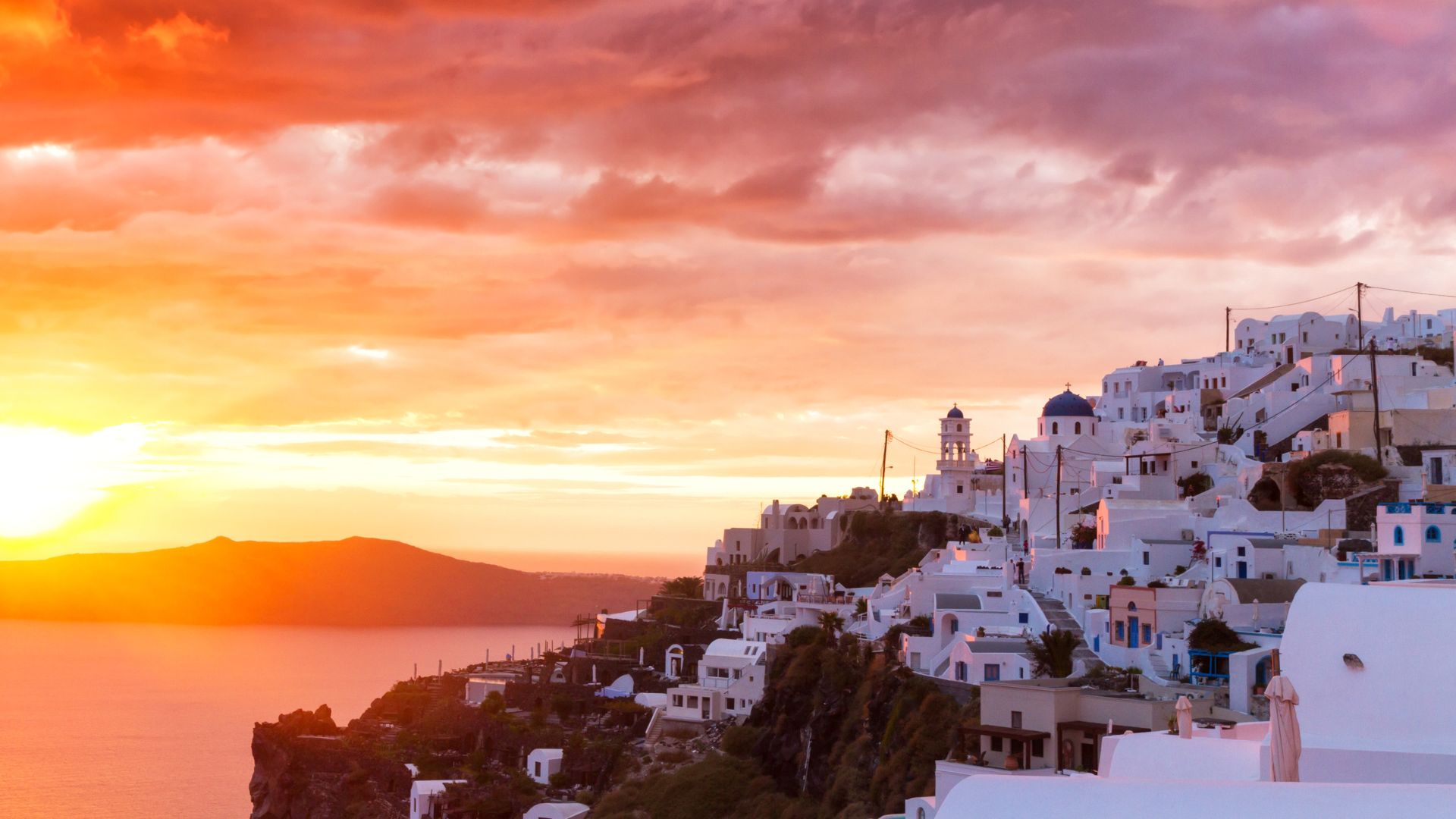
Local Culture, Food, and Adventure
Imerovigli feels like a hidden corner of Santorini where every meal, stroll, and adventure brings me closer to Greek island life. From delicious meze to lazy beach days, the village really spoils my senses.
Savoring Meze and Traditional Dishes
Every meal in Imerovigli turns into a celebration of Greek flavors. I usually start with a bunch of local meze—small plates meant for sharing.
My favorites? Fava (mashed yellow split peas), fried tomatokeftedes (tomato fritters), and creamy tzatziki. Locals take real pride in their cheese, especially the sharp, tangy chloro turo made right on Santorini.
For mains, I try tender lamb kleftiko wrapped in parchment and fresh-caught sea bream grilled with local herbs. Santorini salad—with sun-sweet cherry tomatoes and capers—hits the spot on hot days.
Every bite tastes of the island’s volcanic soil and salty air.
Meals here aren’t rushed. Eating means long conversations with new friends and a chance to linger over every flavor.
The village restaurants use mostly local ingredients, which makes everything taste especially vibrant and fresh.


Charming Taverns and Cafés
Tucked along narrow lanes, I find little taverns and open-air cafés, each with its own story. Many have terraces or balconies with spectacular caldera views—perfect for watching the sunset.
The atmosphere stays warm and easy-going. Servers often remember my favorite drink after just one visit.
In the mornings, my go-to is a small bakery where I order bougatsa (a sweet custard pastry) and local Greek coffee. Evenings, I settle at a tavern with a glass of vinsanto wine and listen to live bouzouki music drifting from a corner.
What I love most is the sense of belonging. Even as a visitor, I quickly feel like a regular, welcomed into everyday life.
The mix of locals and travelers at each table brings new stories and laughter every night.

Outdoor Adventures: Kayak, Jet Ski, and More
Adventure in Imerovigli goes beyond the winding footpaths. The coastline invites me to join a guided sea kayak trip along the caldera cliffs.
Paddling through clear blue water, I get a unique view of the island’s dramatic landscape—a view photos just can’t really capture.
For more speed, I sign up for a jet ski safari across the caldera. Skimming across the waves, I reach hidden coves and untouched beaches that bigger boats can’t access.
The thrill of feeling the spray and wind only makes each stop more rewarding.
Hiking trails start right from the village and lead to the famous Skaros Rock. Along the way, I spot wildflowers and old churches clinging to the edge of the cliffs.
Each outdoor adventure gives me a new reason to fall in love with Imerovigli holidays.
Exploring Volcanic Islets and Beaches
One of my favorite things to do is explore the volcanic islets just off Santorini’s coast.
I join a small-group boat tour to Nea Kameni and Palea Kameni, walk across black lava fields, and soak in hot springs heated by the volcano. The guide explains how these islets shaped the island’s history.
The beaches here look nothing like anywhere else I’ve visited. Red Beach, with its colorful cliffs, and Perissa, with black sand, both remind me of Santorini’s volcanic roots.
I spend afternoons swimming, lounging, and collecting small, smooth stones unique to these shores.
Each visit offers a mix of learning and relaxation. Hearing about the volcano makes each swim and hike feel more meaningful, connecting me to the rugged heart of the island.
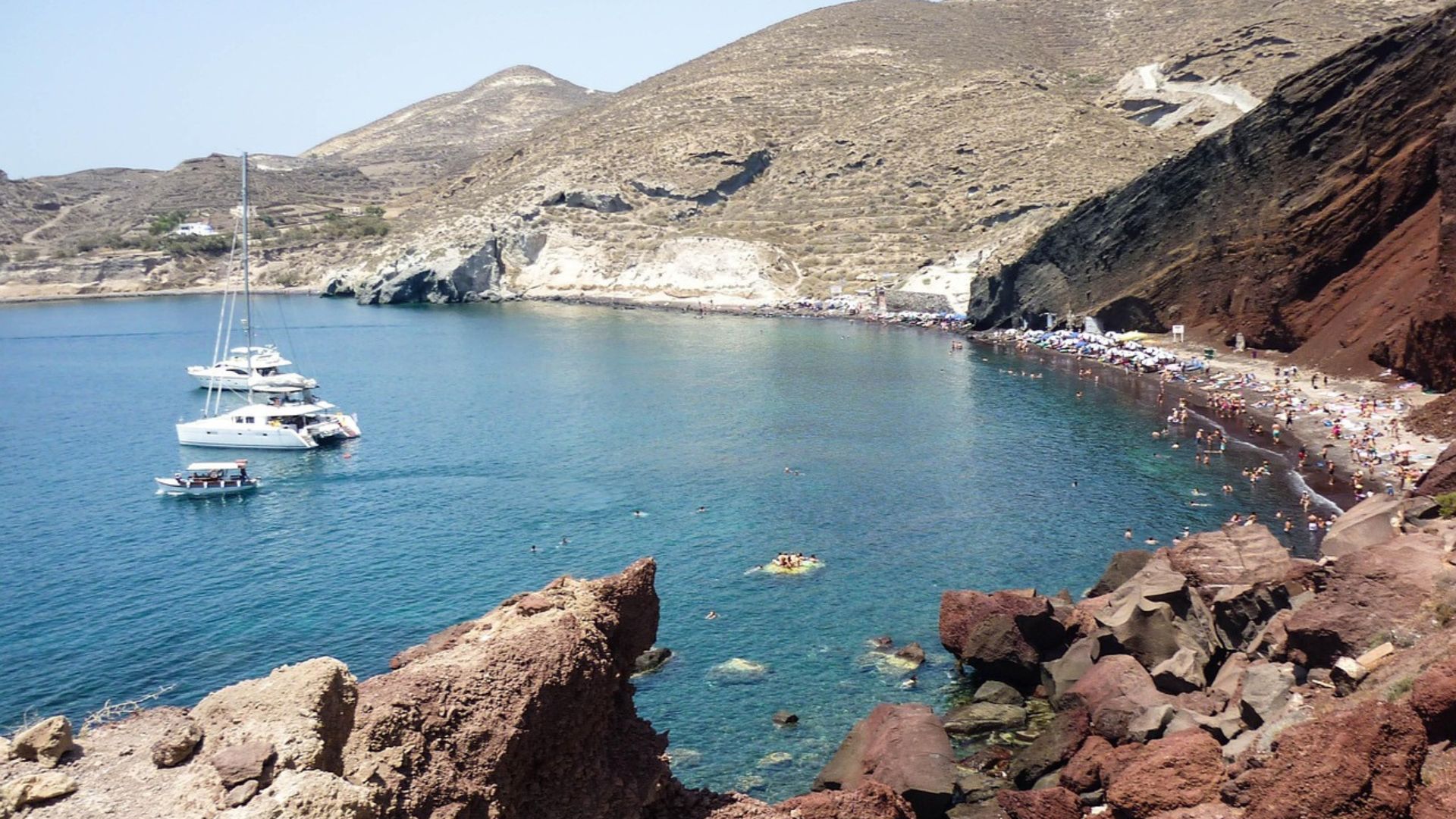
Beyond Imerovigli: Discovering Santorini’s Treasures
Santorini is so much more than the peaceful lanes of Imerovigli. The island promises new sights, flavors, and experiences from morning until night, whether you’re chasing whitewashed villages, black-sand beaches, or volcano adventures.
Day Trips to Oia and Fira
Oia sits at the northern tip of Santorini and is famous for its sunsets. The streets here look like a painting, with blue-domed churches and winding paths.
I love exploring the little shops selling handmade jewelry and crafts—perfect for keepsakes. The view over the caldera always pulls me back, even when I try to leave.
Fira, the island’s capital, stays lively all day. The mix of cafés, art galleries, and museums makes it perfect for wandering without much of a plan.
I take the cable car down to the old port for fresh seafood. If you’re into history, the Archaeological Museum of Thera is a must.
Every corner in Fira tells a story about Greece’s rich past.
Relaxing on Perissa and Kamari Beaches
Perissa and Kamari beaches feel totally different from the clifftop villages. The black volcanic sand is soft and warm underfoot, making beach lounging comfortable even in early summer.
You’ll find plenty of sunbeds, umbrellas, and beach bars right by the water.
Swimming here is a treat after exploring in the heat. I sample local snacks from beachside tavernas—grilled octopus and fresh tomato fritters are favorites.
For active travelers, both beaches offer water sports rentals like paddleboards and kayaks. Kamari’s open-air cinema became a highlight one balmy evening. Watching a movie under the stars as the Aegean breeze picked up? That’s a memory that sticks.
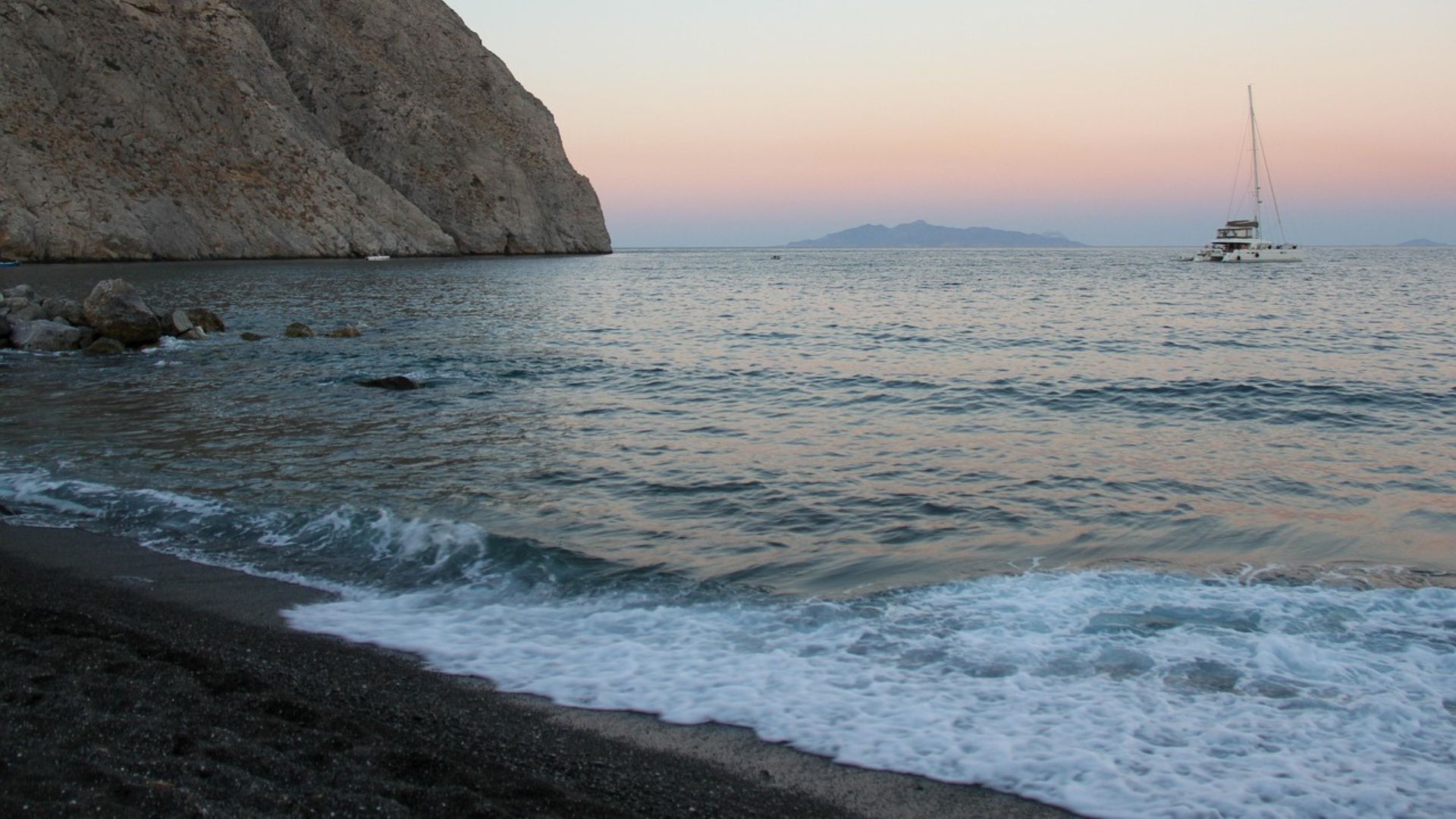
Boat Tours to Nea Kameni
Nea Kameni, a volcanic islet at the center of the caldera, is easy to reach by boat tour from Santorini’s main port. The ride across sparkling blue water feels breezy and scenic.
Hiking trails on Nea Kameni wind up to the crater, passing by steaming vents and unusual rock formations. I notice the scent of sulphur as I get closer to the summit.
The views back at Santorini’s skyline are some of the best I see during my trip. Some tours also stop at the hot springs near Palea Kameni.
The water there is slightly warmer and tinged with minerals, which feels great after a day in the sun.
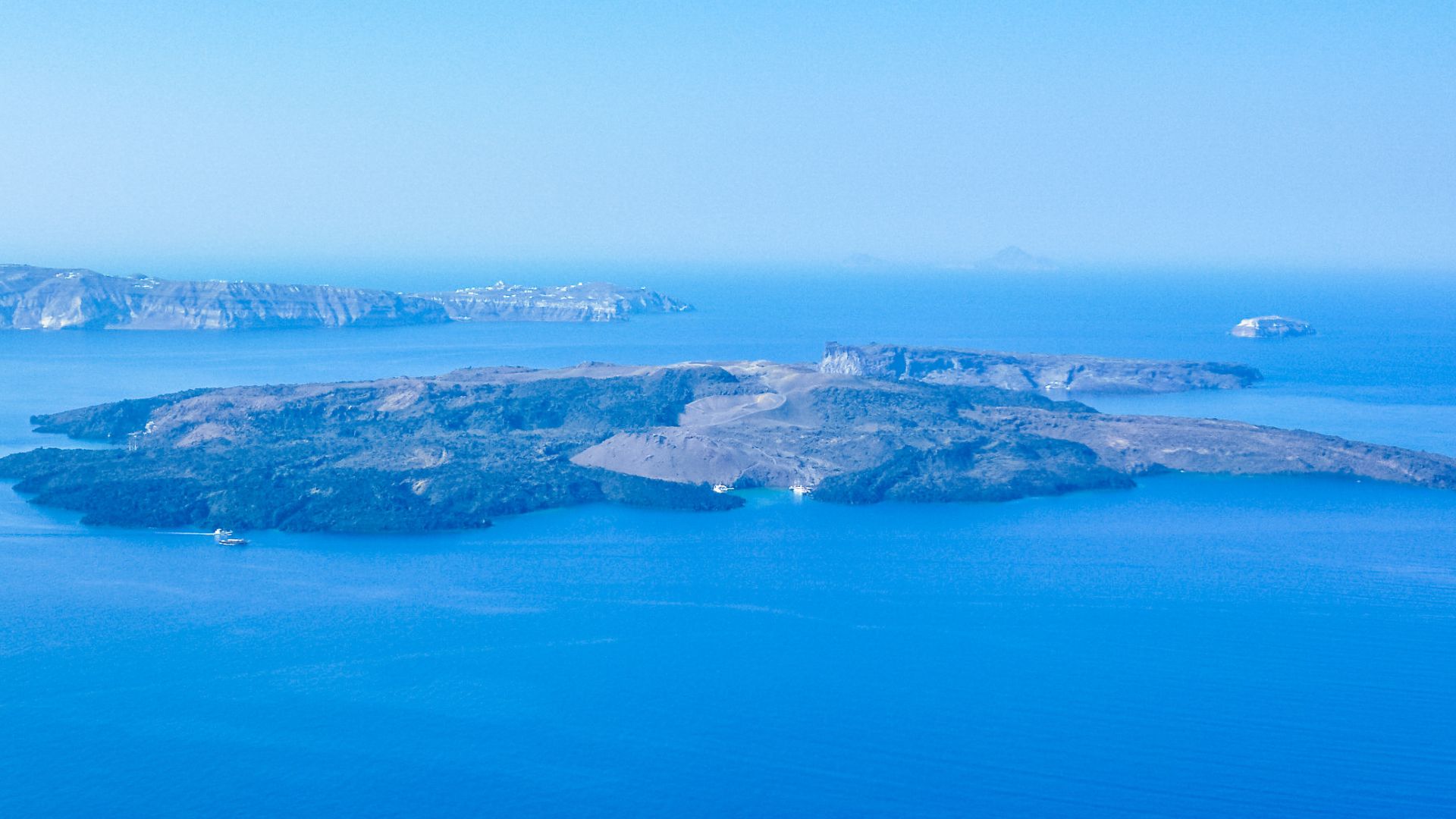
Cultural Hotspots Across the Island
Santorini isn’t just about the jaw-dropping views. I wandered through the ancient ruins of Akrotiri, where volcanic ash froze everything in time. You can really feel what daily life might’ve been like in prehistoric Greece.
The frescoes and pottery there? Still in pretty good shape, honestly. That surprised me.
Pyrgos village sits quietly on a hill, away from the crowds you’ll find in Oia or Fira.
Its narrow, twisting alleys pulled me along to tiny cafes with sweeping views. If you’re around in summer, you might stumble into a village festival—lots of music, food, and those lively traditional dances.
The island’s museums—like the Museum of Prehistoric Thera—let you peek into Santorini’s layered history and culture. There’s just something about seeing it all up close.

